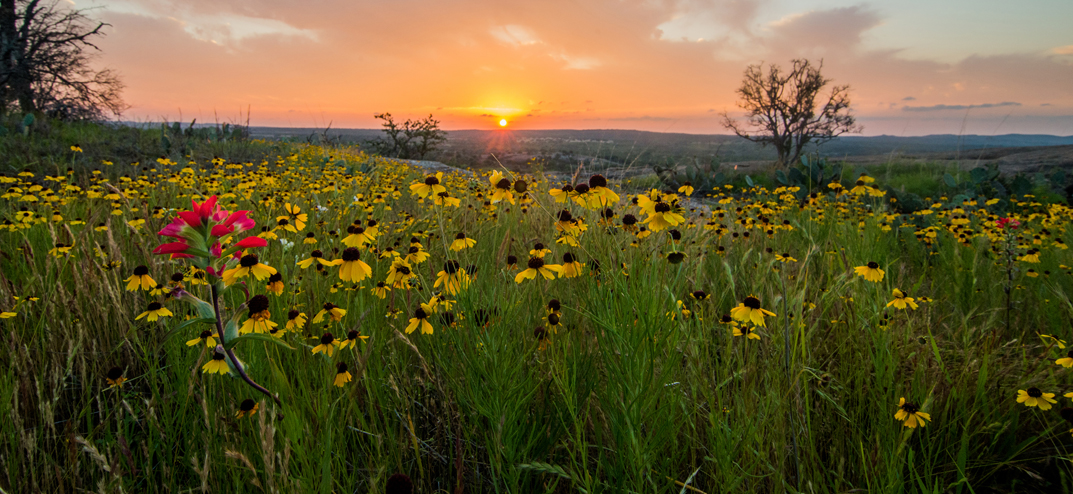Native Landscapes

Native Landscapes
The natural beauty of seasonal blooms, such as our state flower, bluebonnets, in the spring and goldeneye daisies in the fall, is a large part of the unique character and heritage of the Hill Country. But wildflowers do much more than dazzle us with their beauty. They protect soil and reduce the need for fertilizers and pesticides. They provide wildlife habitat and support the pollinator communities that anchor Hill Country ecosystems. The support healthy native plant populations provide for our land is especially important where commercial and residential developments are encroaching on natural areas.
Native landscapes are easy to maintain and use far less water than traditional lawns and gardens, which saves landowners money and conserves our water supply for the future. Happily, a supportive community and a plethora of educational resources have helped motivate landowners to preserve native plants on their land and restore native landscapes that were once covered by St. Augustine grass. Slowly, the market is gaining appreciation for the beauty of native landscapes and the value they add to our quality of life.
To learn more about native plants and how you can transition to native landscaping, visit the Lady Bird Johnson Wildflower Center here or join the Texas Master Naturalist program here. Learn more about St. Augustine Grass here.
Recent Native Landscape News
Hill Country leaders gather for a meeting on water challenges and One Water solutions
On Wednesday, November 13, city leaders and staff from across 15 cities in Central Texas gathered for the second “One Water in the Hill Country” meeting, co-hosted by Hill Country Alliance (HCA) and the City of Boerne. This annual event provides the opportunity for...
Hill Country may reap benefits as Texas grows state parks system
The state is looking to buy thousands of acres of land to expand two state parks and create two new ones, with more purchases to come in the future from a new funding source. The Texas Parks and Wildlife Commission will consider five purchases during its November...
Hill Country Alliance announces 2024 Photo Contest winners and new 2025 Calendar for sale!
The Texas Hill Country is a beautiful region filled with diverse wildlife, clear springs, sprawling rural landscapes, historic towns, and some of the starriest night skies in the country. With a rapidly growing population and increasing development coming into the...
Why we have lawns
Many envision the ‘perfect’ American lawn as a lush, uniform green carpet that covers their outdoor space. But beneath this verdant facade lies a complex social history and significant environmental dilemma. The lawns that stretch across the United States, covering an...
